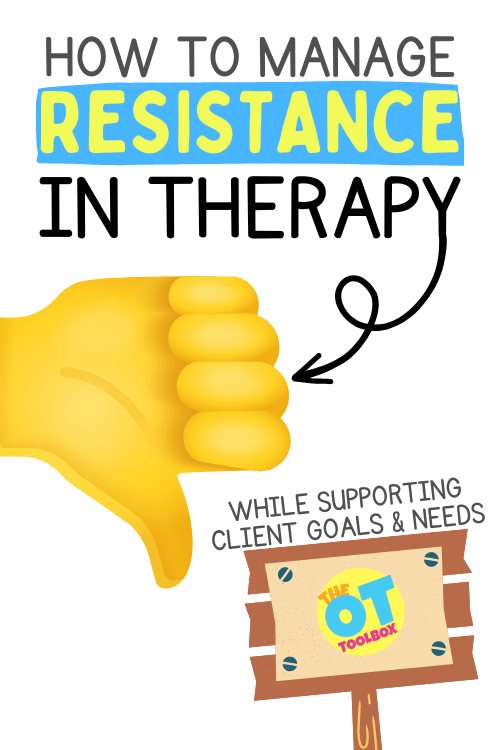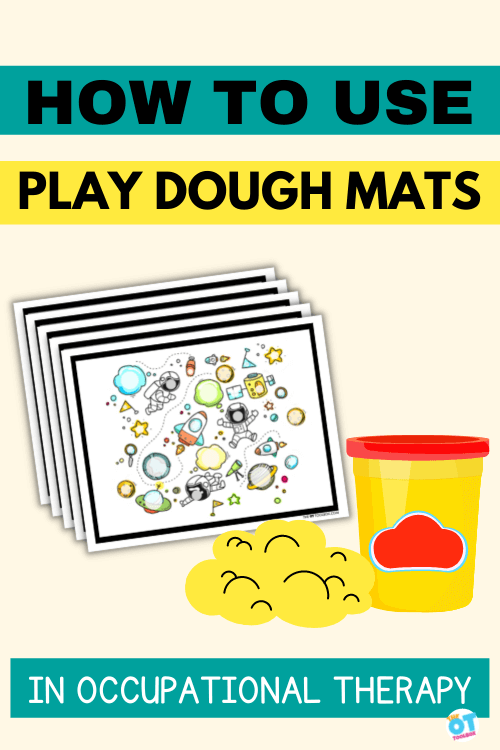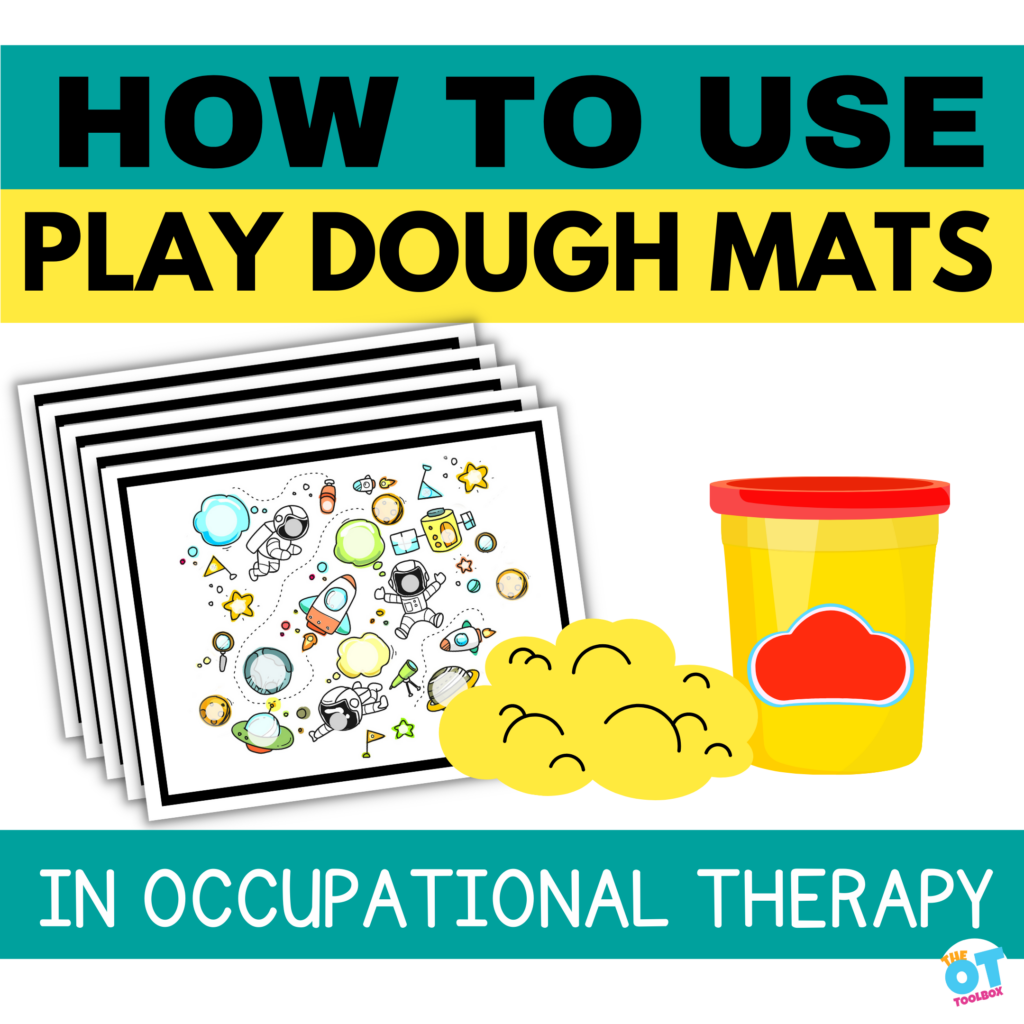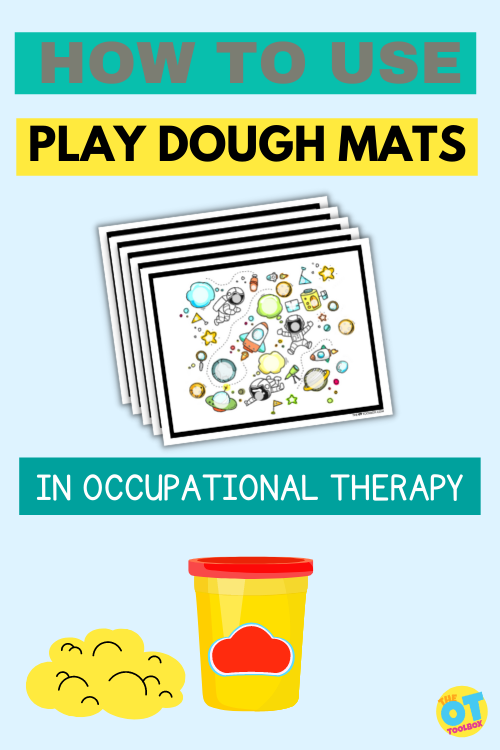So often, we see a child of therapy evaluation and find a need for therapy intervention, but that’s where the resistance begins. Here we are talking how to manage resistance in therapy, and not only that; but how to engage with kids so that we get the truly motivated buy-in for engaging in occupational therapy interventions.
We’ve all had to pull some magic out our our OT hat to engage a resistant child in therapy. The thing is that working on hard things is…hard! Let’s go over some therapy activities for resistant clients. We’ll also cover examples of client resistance in therapy. You might have seen some of these a time or two in your therapy sessions!

Resistance in therapy
If you’ve worked in OT for even a short time, you have probably experienced resistance from your clients. There are many reasons for barriers to participation in occupational therapy intervention. From differing perceptions to the outcomes of OT interventions, to not understanding what occupational therapy is and what it can do for the client, understanding therapy process is just one aspect of client resistance.
There are so many different reasons why a therapy client my object therapy participation. Encouraging participation in therapy sessions and functional engagement in daily tasks can be a couple of underlying areas that we are trying to address in therapy sessions. But what’s more is that beyond client resistance, there may truly be functional occupations that are being missed or delayed as a result of resistance to therapy.
Additionally, when children are asked to participate in a therapy activity or to stop doing a preferred activity and move to another, sometimes challenging, task. In this way the transitions for children to move from preferred to non-preferred activities is sometimes hard to get their “buy in,”.
It doesn’t have to be that way, however.
Let’s cover various techniques to support children showing resistance in therapy sessions. We’ll also cover how to support follow transitions and make engaging in therapy fun through meaningful games and some simple resources to utilize to make sure therapy activities happen smoothly throughout the therapy session.
examples of client resistance in therapy
I’m sure, if you’ve worked with kids before, that you’ve seen a few (or all) of these examples of client resistance in your therapy sessions.
- Complain about therapy activities
- Express doubts about the therapy’s effectiveness
- Challenge the therapist’s suggestions
- Question the purpose of the therapy
- Non-Compliance with therapy tasks
- Refuse to participate
- Skips therapy sessions
- Silent during therapy
- Refuses to engage
- Changes the subject
- Sarcasm or joking as a way to avoid participating
- Hostile behaviors
- Make excuses
- Tantrum or meltdown
- Leaving the room or therapy area
- Ignoring instructions
- Complaining about therapy tasks
Other things like body language or bad language can be examples of resistance to participate in therapy, too. In a few cases, I’ve experienced physical aggression during therapy sessions. These situations were with students who had behavior plans in place by the school. Some students had a history or physical aggression across all classrooms. If there are events like hitting, kicking, biting, spitting, throwing objects, or other physically aggressive acts, then therapy sessions would stop for the safety of the student and others, including myself as the therapist.
It can depend on the student, however, a behavior plan will have a list to follow in various situations, and there might even be a paraprofessional that is with the student at all times.
Why do clients show resistance in therapy?
Before we get into strategies to encourage functional participation, let’s break down why we may see failure to participate during therapy sessions.
Therapy makes the client look and feel “different” than everyone else- Going to a therapy session is not something that every child or teen does, so attending therapy can be a reason that makes them look different. This can lead to resistance to participate and a feeling of dread when it comes time for therapy sessions.
Especially for our middle school students receiving OT services, and for individuals who are very much aware that they are doing something that not everyone else is, this can be a big deal.
Don’t understand occupational therapy- Many times, we as therapy professionals are ready to evaluate or treat a resistant client and the individual states something like, “why are you here?” or “what is occupational therapy” or “who are you and why are you asking me these questions?”!
Do any of these questions sound familiar? Many times clients/patients/students are referred to occupational therapy evaluations without knowledge. This is the case in hospital or clinical situations when OT orders are part of the inpatient process. In the school based scenario, a student is referred to occupational therapy by the IEP team or a child’s parent. Refer to differences between an IEP and 504 for more information.
Many times, the individual has no idea they are going to be seen by OT. This can lead to refusal and a resistance to participate. Whether you are working with a child in the classroom setting in a push in model or pulling a child out of the classroom, this can be a reason that resistance to participate in therapy occurs.
Therapy is hard- Therapy tasks aren’t always easy, especially if your child is participating in an activity that they love doing. If asked to step away from an activity before they are done, they may become upset and non compliant. This can be true with the child working on handwriting tasks or working on strengthening. It is HARD to write and copy all of those sentences. It requires a lot of concentrated effort doing something difficult.
The same is true for strengthening tasks that require engagement and consistent use of muscle groups. It’s easier to regress to that comfortable and “easy” positioning. As an adult, if you are working on a project on your computer, how much advance notice would you like before you have to finish what you are working on and move to a new activity?
Therapy is a change from the normal day to day activities- Even if the typical day to day functions is something that is being worked on, including participation and functional performance, it can be a change from the “norm” to engage in therapy sessions.
Would you appreciate your coworker walking in while you are typing mid sentence, closing your laptop lid, taking you by the hand stating “it is time for the staff meeting. Let’s go!”
Or would you rather they say “just letting you know that you have five minutes before the staff meeting, see you there!”
My guess is that you would like to have some advanced notice before you have to stop working. This is the same for a child who is playing. When they are actively engaged in an activity, they have a plan and don’t appreciate being interrupted in the middle of it. This could be anything from playing with play dough, to completing a puzzle or pretend play.
Therapy challenges the unexpected- Sometimes when kids or teens participate in therapy sessions, they don’t know what to expect. They know that they are working on specific skills, but what if that skill of task is so new and novel that the fear of the unknown exists.
This can be particularly true with things such as toileting. For the child with interoceptive sensory considerations, they may have no idea how a bowel movement on the toilet feels.
This fear of the unknown can be a real area of resistance.
Clients Resist certain parts of therapy
What if children don’t want to stop what they are doing and resists participation in some therapy activities?
You have probably seen this in action when a child LOVES a specific therapy game or activity. It might be that they love anything to do with a therapy swing. But what might really be happening is that the child is overly focused on that item because it’s been a cause for positive feedback in the past.
Or maybe, if the item is a sensory activity like a sensory swing, that the child receives the sensory input that they crave.
Or, perhaps the preferred activity is a highly motivating activity because it’s a theme or character that the child really loves. In these cases it can be very difficult to move from the preferred activity to a non-preferred activity.
In many cases, the child even becomes overstimulated or dysregulated as a result of focusing on that one particular activity, or as a result of reciting too much stimulation or a certain type of sensory input from that one activity.
When a child feels like they don’t want to transition to a new activity or that they didn’t have enough time to finish the task they were completing, they may become upset and hard to calm down.
In these cases, using a positive redirection activity that will give children the ability to comfort themselves and they are feeling overwhelmed.
Giving them time and space to calm down is very important, especially in a non-threatening way. If the child is upset, part of the therapeutic process is to support the child to calm down, identifying feelings and emotions, and offering support. Therapy professionals can guide them through communicating how they are feeling and participating in solving the problem at hand.

How to engage a Resistant Child in therapy
the child that resists therapy sessions is struggling. But that doesn’t mean the therapy strategies and goals are not appropriate!
Whether you are working in a clinic, hospital setting, or school-based, resistance to therapy happens. When giving instructions and laying out transition expectations to young children, it is important to keep in mind their individual and collective developmental age range in order to give clear and concise directions.
The following are strategies to engage the child or teen showing resistance in therapy.
This can include components of getting buy-in that are important to include in every direction given to a young child.
1.Clear and concise expectations- Having a plan of expectations and then using clear directions in those expected task completion is a key way to support engagement.
Use these tips to support and give clear expectations with clients:
- When giving a statement or direction to a child, make sure that it is easy to understand.
- Keep in mind the age of a child and their receptive language skills.
- Using one or two step directions, children will be able to remember what is being told to them.
- When giving the directions, make sure you are in the same room as the child (not yelling “it’s time for dinner” from the kitchen area), preferably kneeling down at their eye level.
Additionally, certain tools can support the “flow” of therapy sessions and offer a visual cue for participants with concrete expectations. Strategies that can support these expectations in therapy include:
2. Stick to Routines. When we work on daily routines, such as bedtime, clean up time, morning routines, leaving the house, etc., we use routines to make sure that the routine of events is the same every time. This strategy can carryover to therapy interventions. Using a similar routine for therapy sessions can include premeditated steps in order to allow children to feel successful and prepared for what is coming next.
Here is a great example of a therapy session routine:
- Arrive to therapy
- Check in
- Sit in the same spot in the waiting room
- Move to the therapy clinic area
- Hellos and talk about last session
- Discuss areas that the client wants to work on
- Warm up activities
- Address identified needs
- Preferred activity
- Cool down activities
- Discuss home program and plan for next visit
Another schedule strategy that can be used for countering resistance to participation in therapy includes staggering preferred activities with non-preferred tasks. For the child that struggles with handwriting and really is resistant to handwriting tasks, you can stagger preferred activities (while selecting options that also address underlying areas of need or other goal areas). You can come up with a treatment intervention plan that includes options for the client to select from that are both preferred and non-preferred.
This strategy can look like:
- Arrive to therapy
- Check-in
- Select activities to address based on goal areas
- Preferred activity
- Non-preferred activity
- Preferred activity
- Non-preferred activity
- Preferred activity
- Cool down activities
- Discuss home program and plan for next visit
One of the best ways to make transitioning from a preferred activity to a non-preferred activity is to make it FUN! When the transition process is exciting, children will join right in.
You can find more examples of daily routines that are used for functional participation here on the website.
3. Utilize Auditory Cues– To make sure that the child in therapy hears what you are saying, when you are giving them the directions, have them stop and look at you.
A fun way to do this with young children is to have a saying such as “1,2,3 FREEZE” where they put their finger over their lips and look at you. There are so many other fun “stop and listen” sayings and games that you can find in this video.
4. Creativity- If you’ve ever worked with kids before, then you know that engaging a resistant child in therapy sessions requires creativity, flexibility, and patience. The kids we serve are struggling in some way (developmentally, cognitively, with sensory processing, or many other ways) and that impacts the way they do things they need to be doing or want to do (This is the functional aspect of OT).
When we work with kids on these challenges, it can be hard for them to actually do the things that we ask them to do. For example, your student with handwriting goals might think “Writing is hard, so why do I want to do hard things?”
It’s our job as the OT professional to help our clients and patients to feel comfortable while building skills. That might mean using less of a structured session and more of a safe space where the child can express themselves.
We do this with our OT thinking caps on, and sometimes that requires some real creativity.
Some of the ways I like to have fun in occupational therapy sessions to make kids feel more comfortable (while being creative about working on those goals) includes:
- Play: Play is the work of the child at all ages. You can use play activities, games, toys, and creative activities that align with therapeutic goals.
- Use their Interests: Tailor your OT activities to the child’s interests. That might mean using specific therapy themes or writing interests-based handwriting lists. When you incorporate interests into OT sessions, it can increase engagement and motivation.
- Sensory Strategies: The benefit with using sensory activities like slime, sensory bins, etc. is that it is engaging and motivating. Some kids love (and crave) this sensory input.
- Movement: Some of our kids LOVE to move. They crave movement. You can incorporate activities that involve movement, such as obstacle courses, yoga, or simple exercises. These can help the child focus, reduce anxiety, and improve their mood.
- Storytelling and Role-Play: You can help your therapy client to participate by including storytelling or role-play. This can help them express emotions, practice social skills, and work through challenging scenarios in a safe and controlled environment. Floor play does this to meet OT goals.
- Crafts: Use OT crafts to help kids to express their feelings and experiences. Some kids love drawing, painting, or sculpting. This can be particularly effective for children who may have difficulty expressing themselves verbally.
- Technology and Digital Tools: The draw of the screen is real! But with recent advances in technology, we as OTs can use that to our advantage to support very functional skills. Use OT apps to promote the skills that need development.
- Choice and Control: A simple choice board can do wonders! Give children some control over their therapy sessions by allowing them to choose between activities. This can help increase their sense of autonomy and engagement.
- Build a Therapeutic Relationship: You learned about “therapeutic use of self” in your OT classes. That tool is a real strength! Spend time building rapport and trust with the child. Show genuine interest in their thoughts, feelings, and interests. A strong therapeutic relationship can reduce resistance and increase engagement. We have some rapport activities in a blog post about back-to-school because that time of year can be a time to strengthen those OT/student relationships.
Games for Resistance in Therapy
Here are four games that make participating in therapy interventions fun. Use these ideas to counter resistance to therapy activities.
- Timer Games – Using timer games are great for making clean up time fun. These games include: “How fast can you clean up all the toys?” or “Can Charlee put all the blue blocks away faster than Henry can put all the green ones away?” When children are engaged in a game during clean up, it’s not so boring!
- Movement Songs – Pairing movement and music together to get children to a specific place will make the transition very exciting. I love using songs like “We are the dinosaur marching marching” or “Flap your arms like a butterfly to the line” or “Jump like a bunny all the way, over to the _____.” When pairing a movement activity with a direction and melody, children learn that transitioning to the new activity location is just as fun as what they have been doing!
- Jobs – Making children an active part of the next activity, but giving them a very specific job, makes them feel important and gives them purpose for moving to the next activity. For example, if you want your child to transition to nap time, they can help pick out the books that are going to be read to the children, or they can put a new pillow case on their pillow. If children are transitioning to mealtime, they can set the table, or hand the other children their name cards. There are so many different jobs that allow children to become part of the new activity.
- Visual Supports- When creating a routine for the classroom or at home, there are several ways to include visual supports to make transitions easier for the children and for you. Using a visual schedule will make your days so much calmer! You can create a visual schedule for different parts of your day (such as morning and bedtime routines) or for your full day. The visual schedule will help children understand what is coming next.
Every day children are asked to transition at least 50, maybe 100 times. That is A LOT! Children don’t always have a lot of control over what is going to happen during their day, but allowing them time in between new activities, making the transition fun, and giving them a job to feel important, will make transitions feel less like a chore. As adults, if we stay consistent, giving children directions while being mindful of their developmental level, our days will become less stressful and more fun!

Colleen Beck, OTR/L has been an occupational therapist since 2000, working in school-based, hand therapy, outpatient peds, EI, and SNF. Colleen created The OT Toolbox to inspire therapists, teachers, and parents with easy and fun tools to help children thrive. Read her story about going from an OT making $3/hour (after paying for kids’ childcare) to a full-time OT resource creator for millions of readers. Want to collaborate? Send an email to contact@theottoolbox.com.






